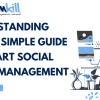Tax planning is crucial for high earners, especially as income brackets increase and tax laws become more complex. In 2024, several new strategies are available to help high earners optimize their tax responsibilities, protect wealth, and achieve greater financial goals. Effective tax planning enables high earners to reduce taxable income, save on taxes, and make
Tax planning is crucial for high earners, especially as income brackets increase and tax laws become more complex. In 2024, several new strategies are available to help high earners optimize their tax responsibilities, protect wealth, and achieve greater financial goals. Effective tax planning enables high earners to reduce taxable income, save on taxes, and make informed investment decisions.
This article explores the top tax planning strategies specifically for high earners in 2024. By implementing these techniques, high earners can manage their tax obligations while building financial resilience and wealth over time.
1. Maximize Retirement Contributions
Retirement contributions are one of the most accessible and effective ways to reduce taxable income. Contributing to retirement accounts such as a 401(k), IRA, or SEP IRA allows high earners to defer taxes on a portion of their income, potentially moving them into a lower tax bracket.
- 401(k) and IRA Limits: For 2024, the contribution limits have been increased, allowing individuals to maximize their tax savings further. High earners should consider making catch-up contributions if they are over 50.
- Backdoor Roth IRA: High earners who are ineligible for a Roth IRA due to income limits can use a backdoor Roth conversion. By first contributing to a traditional IRA and then converting to a Roth, they can benefit from tax-free withdrawals during retirement.
This strategy enables high earners to save significantly on taxes now and reduce taxable income in retirement.
2. Consider Health Savings Accounts (HSAs)
Health Savings Accounts (HSAs) offer a triple tax advantage: contributions are tax-deductible, earnings grow tax-free, and withdrawals for qualified medical expenses are tax-free. For high earners, contributing to an HSA is a smart way to set aside funds for medical expenses while reducing taxable income.
- Eligibility: HSAs are available to individuals with high-deductible health plans (HDHPs). In 2024, the contribution limit for individuals is $4,150, and for families, it is $8,300.
- Long-Term Use: Unused HSA funds roll over year after year, making them an effective vehicle for long-term healthcare planning. Upon reaching age 65, HSA funds can also be used for non-medical expenses (though subject to regular income tax), effectively acting as an additional retirement account.
HSAs are a valuable strategy for high earners seeking to minimize their tax burden while saving for future healthcare costs.
3. Utilize Charitable Contributions

This image is taken from google .com
Charitable donations can provide substantial tax benefits for high earners. By donating to qualified charities, individuals can reduce their taxable income while supporting causes they care about.
- Donor-Advised Funds (DAFs): DAFs allow individuals to make a charitable contribution, receive an immediate tax deduction, and distribute the funds over time. This option is particularly beneficial for high earners looking to reduce a large taxable event in a single year.
- Qualified Charitable Distributions (QCDs): For individuals over 70½, making charitable donations directly from an IRA via QCDs can reduce required minimum distributions (RMDs) and lower taxable income.
Charitable contributions can be an effective way to reduce taxes while benefiting organizations and causes important to the donor.
4. Take Advantage of Capital Gains Strategies
Managing capital gains is essential for high earners with significant investments. Certain strategies can minimize taxes on capital gains, such as:
- Tax-Loss Harvesting: This strategy involves selling investments at a loss to offset capital gains on other investments. High earners can leverage tax-loss harvesting to reduce taxable income, especially in a volatile market.
- Long-Term Capital Gains: Holding investments for over a year can qualify for lower long-term capital gains tax rates compared to short-term gains. High earners benefit from reduced tax rates on long-term gains, which are typically lower than regular income tax rates.
These capital gains strategies enable high earners to manage their investments effectively while reducing overall tax liability.
5. Income Splitting Through Family
Income splitting is a strategy where high earners shift income to family members in lower tax brackets. This approach works particularly well for business owners or those with family members who have lower taxable incomes.
- Family Trusts: High earners can set up family trusts to transfer income to family members in lower Tax Planning Strategies tax brackets, reducing their taxable income.
- Gift Tax Exclusion: In 2024, high earners can gift up to $17,000 per recipient without triggering gift taxes. Gifting assets to family members, especially in appreciated stocks, can help reduce capital gains taxes for high earners.
This strategy allows high earners to manage their wealth more effectively, benefitting their families while optimizing tax outcomes.
6. Invest in Tax-Efficient Accounts
High earners can benefit from tax-efficient investment accounts, such as municipal bonds, which offer tax-free income at the federal level and often at the state level.
- Municipal Bonds: Income generated from municipal bonds is exempt from federal taxes, making it an appealing option for high earners seeking tax-free income. In some cases, municipal bond income is also exempt from state taxes.
- Index Funds and ETFs: These investment vehicles are generally more tax-efficient due to their lower turnover rates, which result in fewer taxable events. By focusing on tax-efficient accounts, high earners can retain more of their investment gains.
Tax-efficient investments are a key component of any tax planning strategy, helping high earners reduce tax liability while growing their wealth.
7. Utilize Real Estate for Tax Advantages
Real estate investments offer several tax benefits, from deductions on mortgage interest to depreciation deductions.
- Rental Property Depreciation: Depreciation deductions can reduce the taxable Tax Planning Strategies income from rental properties, even though the property may appreciate over time.
- Opportunity Zones: Investing in Opportunity Zones allows high earners to defer and potentially eliminate capital gains taxes. This tax incentive encourages investment in underdeveloped areas and can provide substantial tax savings over the long term.
Real estate offers unique tax benefits that can significantly reduce tax burdens for high earners while building long-term wealth.
8. Plan for Required Minimum Distributions (RMDs)
For high earners approaching retirement age, planning for Required Minimum Distributions (RMDs) is essential. RMDs are mandatory withdrawals from retirement accounts, and failure to take RMDs results in a steep penalty.
- Roth Conversions: High earners may consider converting a portion of their traditional IRA to a Roth IRA before RMDs start. Although the conversion is taxable, future RMDs from the Roth will be tax-free, potentially reducing the tax impact.
- Qualified Charitable Distributions (QCDs): Using QCDs to satisfy RMDs allows high earners to reduce taxable income by directing RMDs to a charity of their choice.
Effective RMD planning can help high earners manage taxable income during retirement, reducing the tax impact and preserving retirement funds.
Comparative Analysis Table
| Strategy | Benefits | Challenges |
|---|---|---|
| Retirement Contributions | Tax deferral and potential for growth | Contribution limits and eligibility |
| Health Savings Accounts | Triple tax advantage, long-term growth | Requires high-deductible health plan |
| Charitable Contributions | Immediate tax deduction | Limited to IRS-approved charitable orgs |
| Capital Gains Management | Reduces tax on investments | May require advanced planning and timing |
| Family Income Splitting | Lowers overall tax burden for the family | Involves trust setup and legal considerations |
| Tax-Efficient Investment Accounts | Tax-free or tax-deferred growth | Limited availability depending on investment |
| Real Estate Investment | Depreciation and potential capital gains deferral | Market and tenant risks |
| Required Minimum Distributions | Reduces taxable income during retirement | Requires planning and timing adjustments |
Conclusion
By implementing these tax planning strategies, high earners can reduce their tax burdens significantly, optimize wealth preservation, and strategically position themselves for a financially secure future. With the proper knowledge and planning, high earners can minimize their taxable income, enhance their investment portfolio, and make a positive impact through charitable contributions. Leveraging tax-advantaged accounts and planning for RMDs are essential for building long-term wealth while complying with tax regulations.






















